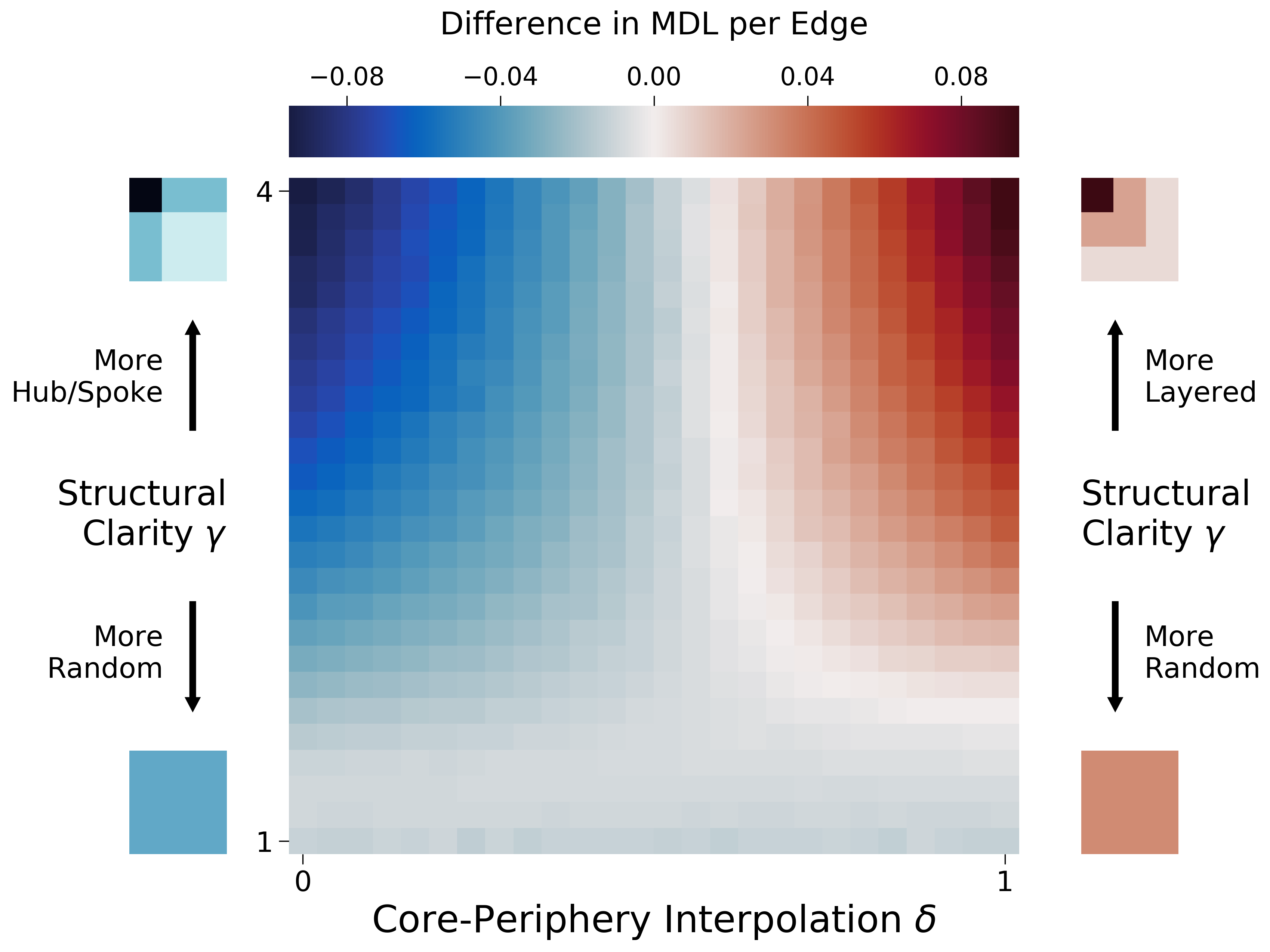
A Clarified Typology of Core-Periphery Structure in Networks
Ryan J. Gallagher, Jean-Gabriel Young, Brooke Foucault Welles
Science Advances, 2021
Abstract
Core-periphery structure, the arrangement of a network into a dense core and sparse periphery, is a versatile descriptor of various social, biological, and technological networks. In practice, different core-periphery algorithms are often applied interchangeably, despite the fact that they can yield inconsistent descriptions of core-periphery structure. For example, two of the most widely used algorithms, the k-cores decomposition and the classic two-block model of Borgatti and Everett, extract fundamentally different structures: the latter partitions a network into a binary hub-and-spoke layout, while the former divides it into a layered hierarchy. We introduce a core-periphery typology to clarify these differences, along with Bayesian stochastic block modeling techniques to classify networks in accordance with this typology. Empirically, we find a rich diversity of core-periphery structure among networks. Through a detailed case study, we demonstrate the importance of acknowledging this diversity and situating networks within the core-periphery typology when conducting domain-specific analyses.